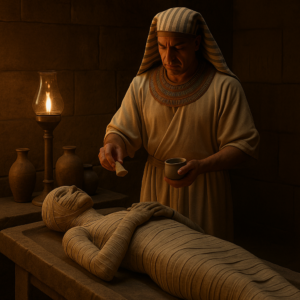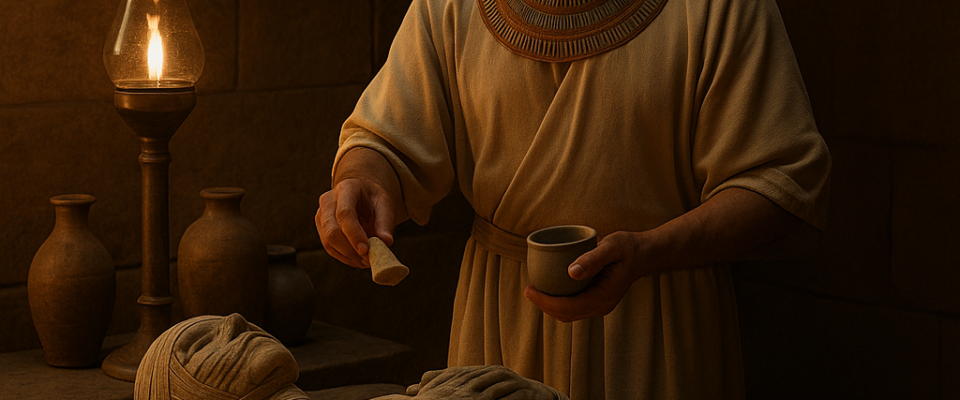Egyptian Mummies – Immortal Legacy and Timeless Medical Value
Introduction
For thousands of years, the ancient Egyptian civilization has left behind awe-inspiring wonders — among them, mummies remain one of the most mysterious and remarkable achievements. More than just evidence of a spiritual belief in life after death, Egyptian mummies hold immense medical value, offering modern scientists deep insights into traditional medicine, human anatomy, and the diseases of ancient populations.


The Art of Mummification – A Pinnacle of Ancient Medical Technique
The Egyptians believed that the soul could only endure if the body was preserved intact. This belief gave rise to a highly sophisticated embalming process developed over 3,000 years ago — remarkably advanced for its time.
Key stages in the mummification process:
- Removal of internal organs via the nose and abdomen
- Cleansing the body cavity with wine and aromatic resins
- Drying the body with natural salt (natron)
- Preserving the body for 40–70 daysWrapping the body in layers of linen infused with incense, resin, and protective amulets

This was a scientific and hygienic method of body preservation that effectively prevented decomposition for millennia.
Medical and Scientific Value in the Modern Era
With the aid of CT scans, histological analysis, and modern DNA technology, researchers have uncovered significant medical insights from ancient mummies:
- 📖 Understanding ancient diseases: such as atherosclerosis, parasitic infections, tuberculosis, bone fractures, and arthritis
- 🧠 Advances in anatomical study: mummies provide remarkably preserved views of the skull, internal organs, and pathological changes
- 🧫 Lessons in disinfection and tissue preservation: the use of plant resins, fragrant oils, and natron demonstrated ancient knowledge of antimicrobial practices
Research into mummies has also revealed important clues about diet, lifestyle, and environmental conditions in ancient Egyptian society.


Influence on Modern Medicine
Mummification was not merely a religious rite — it reflected a pioneering medical mindset in tissue preservation and infection control. Many of the principles observed in ancient embalming practices have influenced:
- Forensic embalming and body preservation techniques
- Internal organ surgery and anatomical modeling
- Archaeological medicine and the study of historical diseases
Conclusion
Ancient Egyptian mummies are not only cultural artifacts — they are living archives of ancient medicine. From each layer of linen to every preserved tissue sample, and every trace of illness retained within, mummies bring us closer to the evolution of human medicine and remind us that throughout history, medicine has always been tied to the desire to defy death and preserve life.

